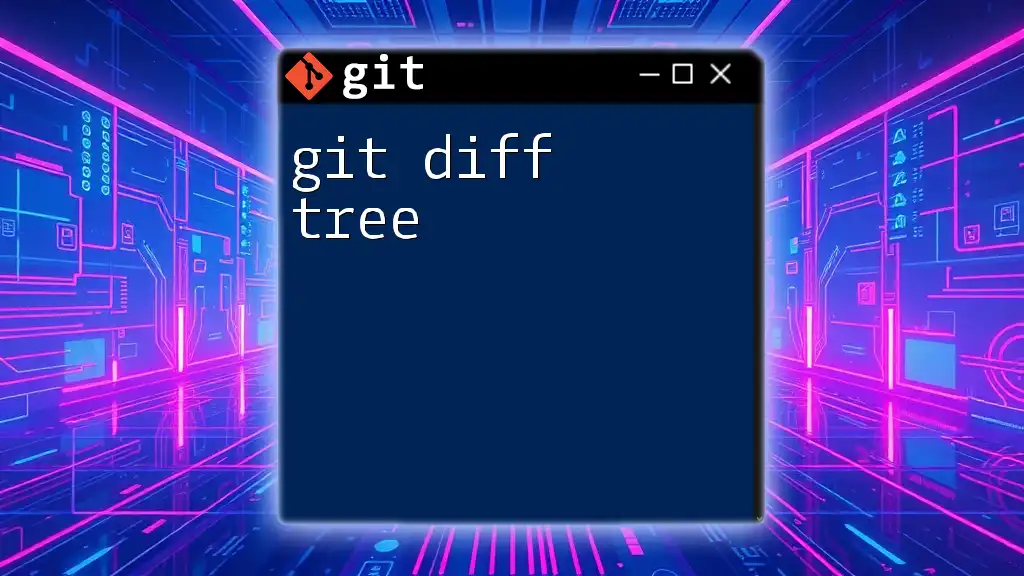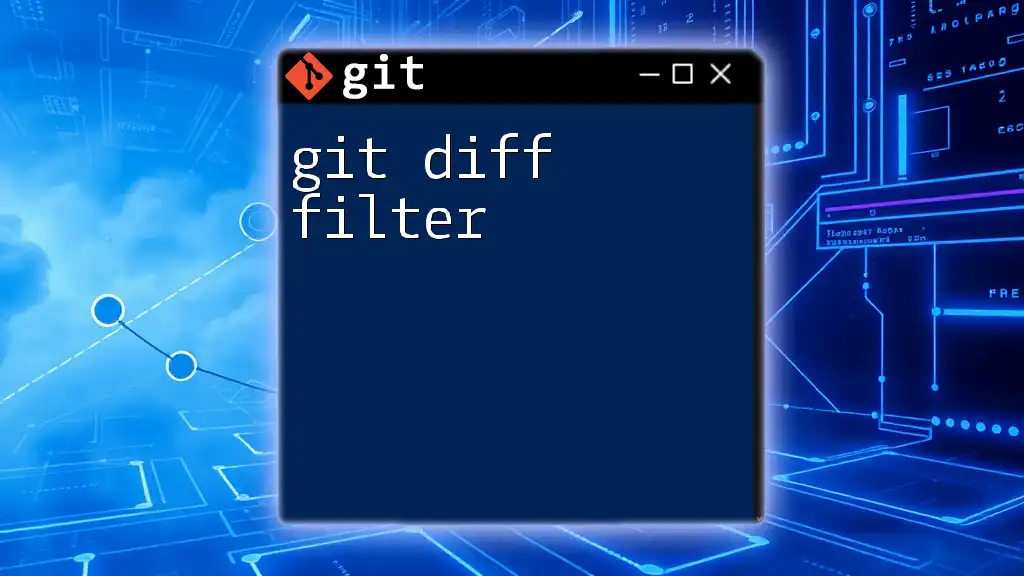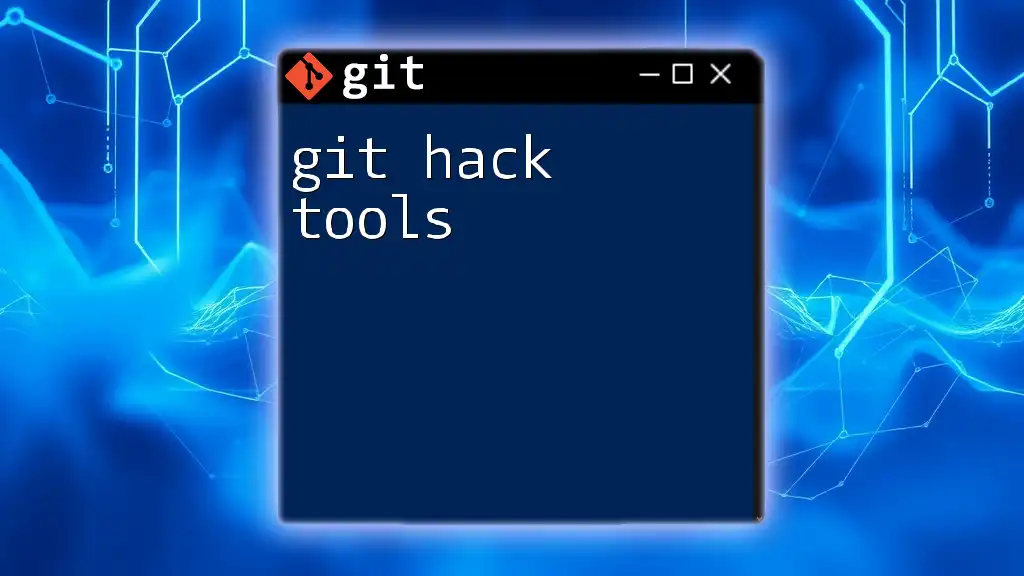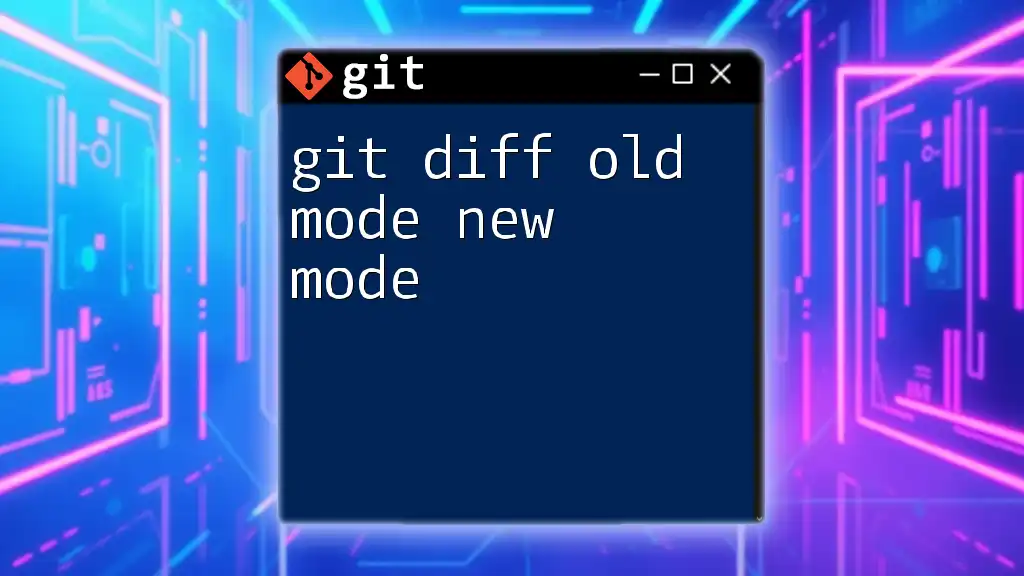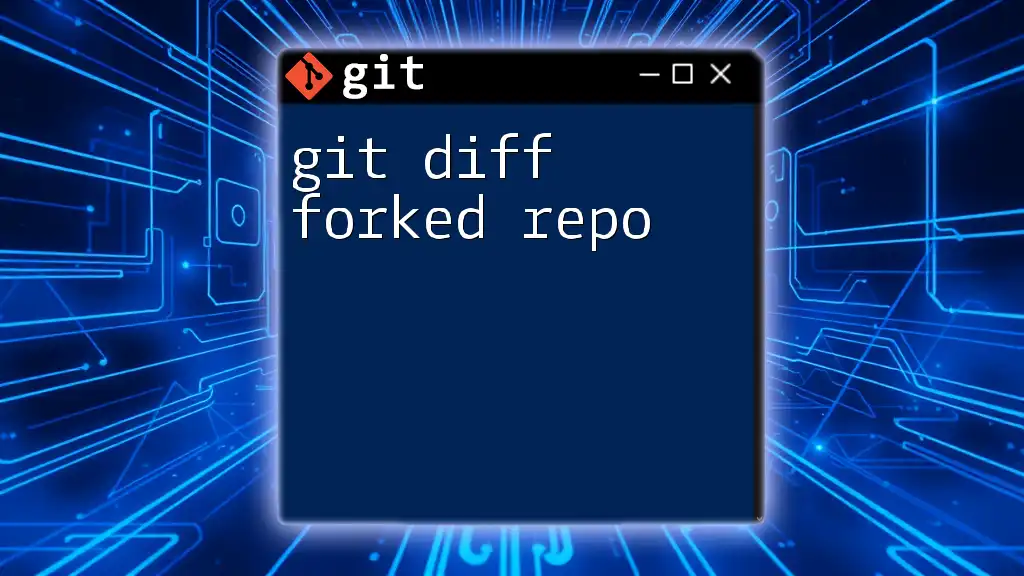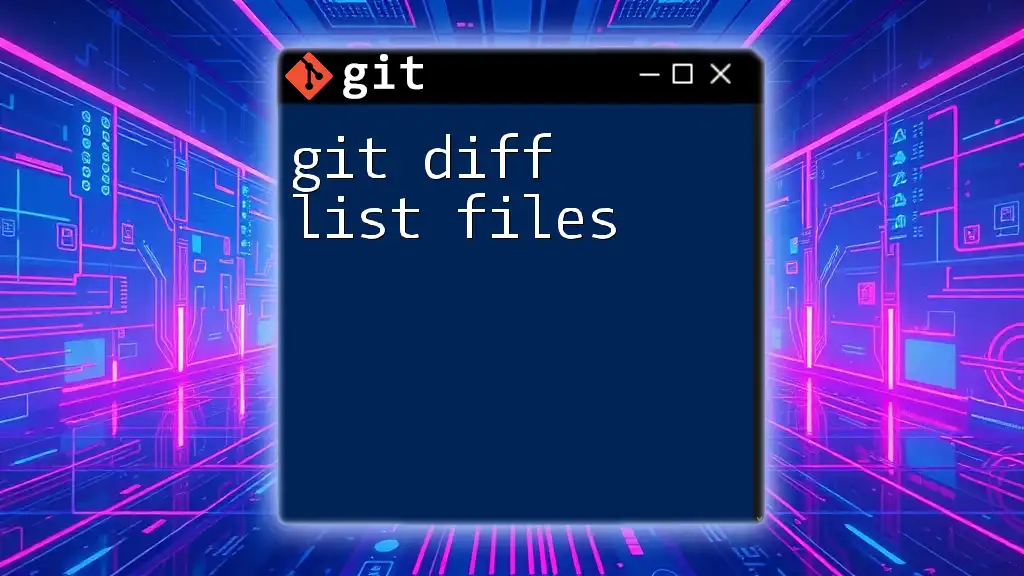Git diff tools are utilities that help you compare changes between versions of files in your Git repository, highlighting differences for easier review and management.
git difftool <commit> <file>
Understanding Git Diff
What is `git diff`?
The `git diff` command is an essential tool for developers using Git. It allows you to see the differences between various states of your code — whether it be between the working directory and the index, between commits, or across branches. This command is crucial for tracking changes, aiding in code reviews, and understanding the evolution of your project.
When executed without any arguments, `git diff` compares the current state of your working directory to the staging area (the index), highlighting any unstaged changes. To utilize it effectively, one must appreciate how to interpret the different outputs it provides.
Common Use Cases for `git diff`
One of the most common use cases for `git diff` is to compare your current changes against the last committed version, ensuring that you know exactly what has been modified before staging the files. Here are some typical scenarios:
- Comparing working directory with the index: This shows changes you’ve made but haven't staged yet.
- Comparing different branches: You can see what changes exist between different branches, which is incredibly useful during merge conflicts.
- Viewing changes between commits: You can analyze the differences introduced in certain commits to understand how specific changes affected the codebase over time.

Built-in Git Diff Options
Basic Syntax
The syntax for using `git diff` is straightforward, but understanding its variations enhances its utility. Here are a few examples:
-
To simply view changes in the working directory compared to the staging area:
git diff -
If you want to compare two branches to see how they differ, you would use:
git diff branch1..branch2
Useful Flags with `git diff`
Git provides a variety of flags to modify the behavior of `git diff`. Here are a few particularly useful ones:
-
`--staged`: This flag allows you to view changes that have been staged for the next commit:
git diff --staged -
`--cached`: Functionally similar to `--staged`, it’s another way to refer to staged changes.
-
`--color`: By default, Git outputs differences with color to make it easier to differentiate added and removed lines.
Output and Interpretation
When you run a `git diff` command, the output typically consists of two sections prefixed by `+` (indicating additions) and `-` (indicating deletions). Understanding this format is crucial for effectively reviewing changes. The default output uses colors to distinguish between these statuses, allowing you to quickly identify what has changed.
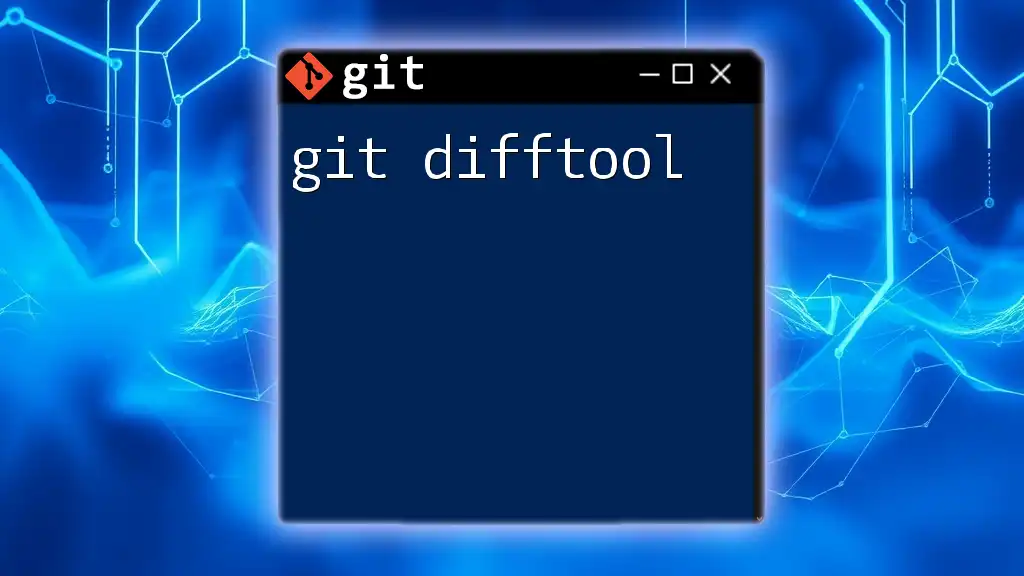
Overview of Popular Git Diff Tools
GUI Diff Tools
Graphical User Interface (GUI) diff tools offer a user-friendly way to visualize changes. Here are a couple of popular options:
-
Meld: A visual diff and merge tool that allows you to compare files, directories, and version control projects. Its intuitive interface makes it easy to spot differences. Installation is straightforward on most operating systems, making it an excellent choice for beginners.
-
Beyond Compare: This tool provides advanced comparison options for files and directories, including its ability to ignore certain files or patterns. It also supports merging, making it a versatile choice for daily coding tasks.
Command Line Diff Tools
If you prefer working in the command line, several robust diff tools exist:
-
diff: A traditional Unix command-line tool that shows line differences between files. Below is a simple example of its usage:
diff file1.txt file2.txt -
vimdiff: If you are familiar with Vim, this tool allows you to see file differences right inside the Vim editor, combining the powerful features of Vim with diff capabilities.
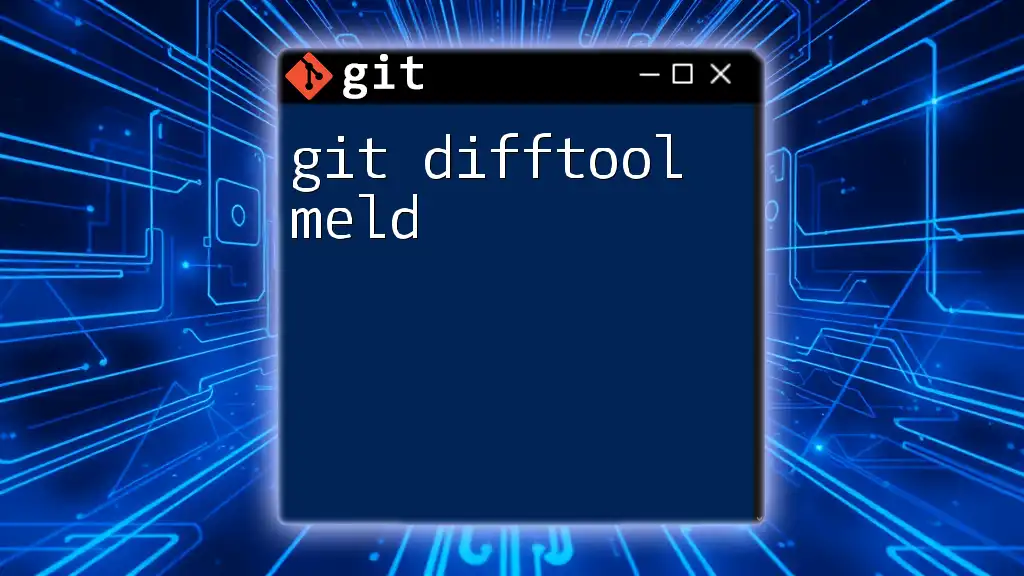
Configuring External Diff Tools in Git
Setting Up Your Preferred Diff Tool
You can configure Git to use your preferred external diff tool, which can enhance your workflow dramatically. For example, to set Meld as your default diff tool, you would run:
git config --global diff.tool meld
This command sets Meld as the tool Git will utilize when you run `git difftool`.
Customizing Diff Tool Options
Once you’ve set a default tool, you might want to customize its options to suit your preferences. For instance, with Meld, you can specify additional flags for behavior during comparisons. This configuration can lead to more productive debugging and review sessions.

Comparing Files and Directories with Git Diff Tools
Comparing Specific Files
Using Git diff tools to compare specific files can be incredibly beneficial, especially when you want to analyze changes without sifting through all modifications. To compare a specific file, you can execute:
git difftool file.txt
This command will open your configured diff tool to show the differences.
Comparing Changes in Directories
Diff tools are also adept at comparing entire directory changes. This functionality is vital when you need to assess modifications across multiple files or when reviewing large changes. You simply run:
git difftool HEAD
This command compares the current state of the working directory against the last commit across all tracked files.

Advanced Tips and Tricks
Ignoring Whitespace Changes
Sometimes, changes you receive may only involve whitespace, which can clutter your comparison. The `-w` option allows you to ignore these changes:
git diff -w
This is particularly useful when working in teams where different settings might alter line formatting.
Creating Custom Diff Drivers
For files that aren't text-based, like images or PDFs, you might consider creating custom diff drivers. First, specify file types in your `.gitattributes` file. For example:
*.png diff=customdriver
You would then define how `customdriver` handles differences, enhancing your ability to review various file types with Git.

Conclusion
In summary, Git diff tools are indispensable for any developer. They offer an insightful perspective into the evolution of your code and facilitate an impactful review process. By mastering the built-in commands and external tools, and configuring them to meet your needs, you can significantly enhance your programming productivity and collaboration. As you continue to explore these tools, consider participating in courses or reading further on Git commands to deepen your understanding and mastery.

Additional Resources
For further reading, visit the official Git documentation or explore tutorials on various Git topics that can deepen your knowledge and aid your development process.

FAQs
What is the difference between `git diff` and `git difftool`?
The `git diff` command shows the differences between files directly within the terminal, while `git difftool` opens an external GUI diff tool for a more visual representation of changes. Each has its place, depending on user preference and complexity of changes.
How do I change the default diff tool in Git?
To change the default diff tool, simply run the command:
git config --global diff.tool <new-tool>
After this, when you run `git difftool`, it will launch the specified tool for viewing differences.
Can I compare files in different repositories?
Yes, you can manage comparisons across multiple repositories by navigating to the respective repositories and using context-specific paths, but you need to ensure that the paths you compare make logical sense within the contextual changes you want to assess.







